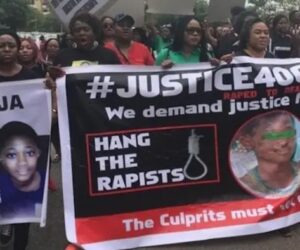Across Kenya, online sexual exploitation and abuse (OSEA) is rapidly escalating. Predators are no longer hiding in dark corners; they are operating in plain sight on the apps we use every day.
Two new reports by Equality Now, a worldwide human rights organisation, confirm that digital platforms like Facebook, WhatsApp, and M-Pesa are being weaponised to recruit, groom, and traumatise local women.
The first report, “Experiencing Online Sexual Exploitation and Abuse in Kenya: Survivor Narratives and Legal Responses,” shares the stories of twenty survivors seeking justice and support. An accompanying policy brief, “Not Just Online: Addressing Sexual Exploitation and Abuse Across Digital and Physical Realities,” further explores how online and offline abuses are intertwined.
The reports identified three countries – India, Kenya and the US – to undertake campaigns with local women’s rights organisations. They gathered evidence of survivors’ lived experiences and helped increase the understanding of national and international policymakers on the changes required.
These changes are required at both international and national levels to end Technology-facilitated Gender-based violence (TFGBV), with a focus on sexual exploitation and abuse.
Read also: TikTok, CABC to tackle online gender-based violence in Nigeria
What does TFGBV mean?
Technology-facilitated Gender-based violence (TFGBV) is characterised as an act of violence carried out by one or more individuals and either facilitated or exacerbated through information and communication technologies. It targets a person based on their gender and/or sexual identity or by imposing harmful gender norms.
This has been done through technology-facilitated sex trafficking, online sexual coercion and extortion, and image-based sexual abuse, including deepfakes and non-consensual sharing of intimate images.
However, it’s important to note that online and offline abuses are not separate. They are profoundly interconnected and mutually reinforcing, with technology often amplifying existing patterns of gender-based violence.
Limited digital literacy, combined with factors such as displacement due to changing climatic conditions and persistent poverty, creates fertile ground for sexual exploitation.
Technology has enabled perpetrators to exploit these vulnerabilities, targeting women and girls in both rural and urban settings with false promises of better livelihoods.

TFGBV beyond Kenya
In India, Equality Now engaged several stakeholders to better understand the gaps, challenges, opportunities and priorities in addressing TFGBV.
One of them is Rachna, a lawyer in Delhi. She narrated a case where both the perpetrator and survivor attended a prestigious university in Delhi and were from affluent families. During the course of their romantic relationship, the woman had shared naked photos of herself with the perpetrator.
At some point, while the relationship was still ongoing, she received a message from an unknown man on social media asking if she was the same person whose photographs he had seen on a chat website. The person identified her through her public social media profile.
The boyfriend (perpetrator) had been posting her photos on random websites and chatting with people, pretending to be her. The survivor found out about two to three months after the perpetrator had started doing this.
Rachna mentioned that both parties were around 20 to 21 years old at the time, and the survivor did not want to file a police complaint or involve her family. While she was clear that she felt no shame for having shared the pictures, she wanted the violation to stop so she could stop engaging with the perpetrator altogether.
It’s saddening that social media platforms such as Facebook, WhatsApp, and TikTok, dating sites, encrypted messaging services, and mobile money applications like M-Pesa are increasingly used to lure women and girls into harmful situations.
The lack of binding obligations on tech companies to monitor and report harmful content compounds the problem, with social media platforms failing to adequately enforce their OSEA policies.
Perpetrators can connect with, manipulate, blackmail, harass, and shame victims with unprecedented reach, speed, and anonymity, often operating with impunity inside and beyond Kenya’s borders.
This has left survivors subjected to a range of violations, including being coerced into creating sexual content, blackmailed with intimate images, livestreamed during abuse, and trafficked.


Causes of TFGBV among women in Kenya
Access to technology, its usage, and the need to be technologically literate are indispensable to modern life. With technology and the internet becoming an integral part of our lives, the numerous digital media and platforms available have become spaces where gender-based violence (GBV) is actively perpetuated and amplified.
A consistent pattern with TFGBV is the disproportionate targeting of women and LGBTQI+ individuals, with social locations playing a critical role.
Further, several studies have highlighted existing gaps within legal structures across many countries, which act as a significant deterrent for the system to respond promptly and effectively to support TFGBV survivors.
Participants in the convening highlighted that poverty frequently coerces women and girls into exploitative situations in exchange for a livelihood. Many contact recruitment agencies on social media platforms such as Facebook and Telegram for employment.
These agencies are often fraudulent, acting as fronts for trafficking rings; the women are deceived into paying for the service through mobile payment systems like M-PESA and are subsequently trafficked abroad, mainly on visitor visas rather than work visas.
Once the women and girls arrive abroad, in countries like the United Arab Emirates, Saudi Arabia or Thailand, they are given the contact details of men pretending to be their bosses.
Read also: Is Kenya’s ChatGPT surge a sign of progress or a global testbed?
Kenya’s legal system to address OSEA
Kenya has taken progressive steps to tackle sexual exploitation and abuse across physical and digital spaces through various laws and policies. This includes the Sexual Offences Act (2006), Counter-Trafficking in Persons Act (2010), the Computer Misuse and Cybercrimes Act (2018), read together with the recently enacted Computer Misuse and Cybercrimes (Amendment) Act (2024).
The country has also ratified international and regional instruments, including the Maputo Protocol and Palermo Protocol, which oblige states to protect women and girls from all forms of sexual exploitation and abuse.
However, Kenya’s legal system remains rooted in outdated definitions of abuse, often treating online and offline harms as separate, and enforcement remains weak and fragmented.
National laws haven’t kept pace with emerging technologies such as artificial intelligence, deepfakes, and algorithmic targeting, nor do they adequately recognise or define key online harms, including livestreamed sexual abuse and image-based sexual exploitation.


What’s the way forward?
Comprehensive legal reform is still urgently needed to strengthen and harmonise Kenya’s laws, improve digital forensic capacity, and ensure survivor-centred justice. Current reviews of the Sexual Offences Act and the Counter-Trafficking in Persons Act offer crucial opportunities.
Experts are calling on Kenya to adopt trauma-informed, gender-responsive approaches and to strengthen coordination across justice, health, and psychosocial systems.
There is a need for better collaboration among stakeholders, increased institutional capacity to prevent and respond to abuse, and stronger accountability mechanisms, supported by adequate resources.
Sustained prevention and awareness efforts are also essential to challenge harmful social norms and build a culture of zero tolerance for sexual exploitation and abuse.
Read also: Kenya bans online alcohol sale to curb rising spate of intake among children








